SOCIAL, ECONOMIC AND POLITICAL DEVELOPMENT AND CHALLENGES IN THE DEMOCRATIC REPUBLIC OF CONGO (DRC) SINCE INDEPENDENCE - KCSE HISTORY NOTES
Specific Objectives
By the end of the topic, the learner should be able to:
Table of Content
Works Cited
Political developments in Democratic Republic of Congo since independence
The Belgians relinquished their political dominion of Congo by granting them autonomy on 30th June 1960 Patrice Lumumba (Prime Minister) of Congolese National Movement Party and Joseph Kasavubu of Abako Party (Head of State) formed a fragile coalition government. The two leaders differed ideologically.
The period between 1960 and 196 witnessed power struggle between Kasavubu and Lumumba on one side and Secessionist Moise Tsombe of Katanga and Albert Kalonji of Kasai on the other side In 1961, Patrice Lumumba was assassinated. This led to withdrawal of his supporters from government.
In 1961, the UN Secretary General Dag Hammarskjöld perished in a plane crash in the Congo while attempting to bring a peaceful political solution to the Congo crisis.
In 1964, a new constitution was formulated as a way of solving the political problems that plagued Zaire soon after independence. Zaire became a federal state with a federal president and separate assemblies for each state. On 23rd November 1965, Joseph Desire Mobutu organized a bloodless military coup, which removed the civilian government of president Kasavubu and Prime Minister Sylvester Kimba. In November 1965, Mobutu took over power after a bloodless coup. In the same year, , Mobutu banned all political parties. He suspended the constitution and parliament. He abolished the federal system and local assemblies and reduced the number of provinces to eight. In 1967, He formed the Peoples’ Revolution Movement (MPR), which became the only legal party in Congo. He in effect-replaced democracy with one-party dictatorship leaned to the west during the cold war. 1n 1970, Mobutu declared himself the life president of Congo, after winning the presidential election. In 1971, he outlawed the use of European names for people, places and physical features as a way of removing colonial legacy. The country was renamed Zaire. His own name changed to Mobutu Sese Seko. Leopoldville was renamed Kinshasa. In 1973, Mobutu announced the nationalization of all foreign enterprises. In 1977-1978, the Shaba Rebellion broke out mainly after an attack by the Congolese National Liberation Front from their base in Angola. The Belgian troops were called to silence the rebels. In 1990 and 1991, multiparty activists stepped up pressure for change. In September 1991, dissatisfied soldiers and civilians held demonstrations, which led to death of 117 people. In 1997, Laurent Kabila successfully ousted Mobutu, assisted by Rwanda and Uganda. Mobutu fled to exile in Morocco where he died. In January 2001, Laurent Kabila was assassinated in mysterious circumstances. His son took over power. In April 2002, through a power–sharing agreement presided over by Thabo Mbeki and a UN envoy, Mustapha Niasse, a government of national unity was formed. Economic developments in DRC since independence
The political chaos inn DRC up to 1965 did not favour any economic progress. During the reign of the Belgians in Congo, no viable economic development was initiated. Little development was done in infrastructure in order to facilitate transportation of raw materials to the ports of Matadi etc.
At independence, the country was faced with the problems of shortage of manpower, skills and entrepreneurship. When Mobutu took over, there was some slight economic progress. Transport and communication improved as more roads and railway were constructed to link major towns of Matadi, Kinshasa, Lubumbashi and Kisangani. Navigation on the river Congo was improved, which led go expansion of mining and agricultural sectors. Mining of diamonds resumed after the turbulent years and resulted in reduced inflation. Mobutu encouraged foreign investment in the mining sector. However, the fall of world copper prices in 1970s again began to derail the economic growth in DRC. In the 70s, the government nationalized foreign firms employed inexperienced people to control them. In 197, Mobutu enacted a law that placed state finances and expenditure under him, thus reducing the flow of capital to the provinces. In 1976, he encouraged mutual cooperation between private firms and the government in the extraction of minerals such as copper, oil, diamond, cobalt and manganese in a bid to create employment opportunities. He also emphasized on diversification of the economy which greatly boosted food production. The entertainment industry has also grown to become an invisible export through repatriation of profits back home by the foreign based musicians. Energy supply has been increased through the construction of the Luga hydroelectric power station. Social developments and challenges in DRC since independence.
Between 1961 and 1965, there was little improvement in the field of health and education in DRC due to constant power struggles and civil strife.
When Mobutu took over in 1965, he strived to expand schools and universities. For example, by 1970, he had established three universities. He also improved on the provision of health facilities. He banned religious education in schools In 1971, attempted to revive indigenous culture through the Authenticity programme that involved renaming places that had foreign names In the 1970’s, in an effort to improve the welfare of citizens, a national insurance programme was established. Mobutu also gave prominence to music as part of the Congolese curriculum. The independent government supported sporting activities through construction of stadium and other sporting facilities. However, living standards in Zaire continued to fall as health services, water and sanitation continued to be inadequate. The steady rise in population was without a commensurate growth of social services. In summary, the common challenges socially were illiteracy, extreme poverty, famine and diseases caused by civil strife, massive unemployment, refugee problem and religious persecutions by Mobutu.
Political challenges that the democratic republic of Congo has faced since independence.
Economic challenges that Democratic Republic Of Congo (D.R.C) faced in 1970’s.
1 Comment
SOCIAL, ECONOMIC AND POLITICAL DEVELOPMENTS AND CHALLENGES IN TANZANIA SINCE INDEPENDENCE - KCSE HISTORY NOTES
Lesson Objectives
By the end of the topic, the learner should be able to:
Table of Content
Works Cited
Political developments in Tanzania since independence
At the time of independence, Tanzania comprised of two countries. I.e. Tanganyika and Zanzibar. Tanzania became independent in 1961 under Julius Nyerere while Zanzibar became independent in 1963 under the Sultan Seyyid Abdullah.
In 1962, Tanzania became a one-party state with a republican constitution and an executive president. Tanganyika African National Union (TANU) became the sole political party. On 22nd April 1964, Julius Nyerere and Sheikh Abeid Karume signed a union document. Nyerere became the executive head of state and government while Karume as the first vice-president. In 1967, president Nyerere adopted the ideology of African Socialism through the Arusha Declaration In 1972, the first Vice-president, Sheikh Abeid Karume, was assassinated. Aboud Jumbe succeeded him as Zanzibar’s president and the vice-president of Tanzania. In 1973, the capital of Tanzania was transferred from Dar-es-Salam to Dodoma. In 1967, the ruling party in the Mainland Tanganyika-TANU and Afro-Shirazi Party in Zanzibar merged to form Chama cha Mapinduzi (CCM). Nyerere became the party chairman. In 1978-1979, president Idi Amin invaded Tanzania to annex the Kagera Province, which he claimed, was a Ugandan territory. Nyerere swiftly repulsed Ugandan soldiers. In 1985, Nyerere retired as president and was replaced by Ali Hassan Mwinyi who had succeeded Jumbe as head of Zanzibar and Tanzania’s first vice president. In May 1992, Tanzania adopted multi-partism after the 8th constitutional Amendment Act. In 1995, Tanzania conducted the first multi-party election, where Benjamin Mkapa was elected president. Social developments in Tanzania since independence.
The major highlight in the social development of an independent Tanzania was an attempt to create a classless society with e reduced gap, between the rich and the poor. Through the Ujamaa policy, president Nyerere tried to turn Tanzania into a country that had political and economic policies based on African traditions and aspirations.
Under the policy, communal farms were created. Primary education was made free in 1977 and became compulsory in 1978. At present, Tanzania boasts of the highest number of literate persons in eastern Africa. Upto late 1980s, government provided free health services, until the introduction of the Structural Adjustment Programmes by the Donor community. Kiswahili was adopted as a national language and a major medium of instruction in schools. Economic developments in Tanzania since independence
The main landmark in Tanzania’s economic the launch of Ujamaa as a development policy in 1967 during the Arusha declaration..
Ujamaa was meant to transform production in rural areas and to increase labour productivity and even allow specialization introduction. The government nationalized all the major means of production and essential services in order to empower people economically. The Tanzam railway was constructed with the help of china and was completed in 1975. In 1976, cooperative societies were abolished and replaced with centralized corporations owned by the government. The period between 1979 and 1985 witnessed economic stagnation in Tanzania as investors pulled out of the country. The collapse of the East African Community also affected the economy of the country. After 1985, Nyerere’s economic policies began to be challenged openly by scholars and economists When president Mwinyi took over, he undertook to reform the economy of Tanzania. Political challenges that Tanzania has faced since independence.
Social problems, which Tanzania faced since independence
Economic challenges.
THE NATIONAL LAND COMMISSION - KCSE HISTORY NOTES
Specific Objectives
By the end of the topic, the learner should be able to:
Table of Content
Works Cited
Functions of the National Land Commission.
Development in agriculture since independence
After independence, the government encouraged small scale farming of coffee and tea as opposed to large scale farming that existed during the colonial period.
The Agricultural development corporation (ADC) was set up to manage large scale farms that were established by the government in western, Rift Valley and Coast provinces. Such farms specialize in production of seeds to be used by farmers for planting. They also specialize in production of high quality dairy and beef cattle in Kenya. The government also established the Kenya Agricultural Research Institute (KARI) in Muguga near Kikuyu to assist in identifying good crop breeds for different types of soils. Irrigation Schemes were expanded in the marginal areas. For example. Mea (central), Bura (coast), Ahero (Nyanza) and Perkerra (central) The government created development authorities to effectively manage water catchment areas. For example, TARDA, KVDA and LBDA Challenges facing Kenya’s agricultural sector.
Industrial developments in Kenya since independence
Kenya’s industrial sector was shaped by the long period of colonization. At independence, industry was characterized by dominance of foreign capital and dominance of the agricultural sector.
Factors that facilitated industrial development in Kenya since the colonial era
Measures taken by the Kenyan government to promote industrial development since independence
Factors that have hindered industrial development in Kenya
Social Development and challenges since independence.
EDUCATION
To solve the problems inherited at independence in the education sector (poor quality education and poor facilities available the Kenya children), the government undertook the following measures;
Education Commissions.
Main developments in education in Kenya since independence
In 1975, Kiswahili was made the official languages of parliament and learning in schools. The ministry of education established structures right from the district level to national level to help in fulfilling the national objectives of education.
Several education commissions were set up to streamline education. The harambee strategy was employed to expand education facilities. Many schools were built. In 1980, the government took over the responsibility of providing pre-primary education. In the 1990s, the government in collaboration with UNICEF launched a programme to promote early childhood education. By1998, the total number of students in the various universities was over 40,000. In 1969, the ministry of education took over the administration of primary education from local government, this witnessed increased enrolment. In 1978, the government introduced the school milk programme to encourage children especially in drought prone areas to go to school. The programme stalled in 1990 but had achieved higher enrolment in schools. The Ministry of education launched school feeding programme, targeting dry areas. In 2002, the NARC government introduced the ‘Free Primary Education’ policy. Further reading be done from evolving world on Elementary education and Tertiary education in Kenya
Health.
MEASURES TAKEN TO IMPROVE THE HEALTH SECTOR IN POSTCOLONIAL KENYA
Major challenges facing the Health sector in Kenya.
Ways through which the government has encouraged the preservation of African culture since independence.
SOCIAL, ECONOMIC AND POLITICAL DEVELOPMENTS AND CHALLENGES IN AFRICA SINCE INDEPENDENCE - K.C.S.E HISTORY AND GOVERNMENT NOTES
Specific Objectives
By the end of the topic, the learner should be able to:
Table of Content
Political challenges that have faced African countries since independence
Economic challenges facing independent African states today.
Social challenges that have faced African states since independence
Specific Objectives
By the end of the topic, the learner should be able to:
Table of Contents
LOCAL AUTHORITIES IN KENYA
Works Cited
KCSE HISTORY TOPICAL QUESTIONS
To access this resource and other numerous resources. you need membership plans. Please click here for more details
DEVOLVED GOVERNMENT.
Devolution This refers to the granting of power from the central government to a lower level such as a region or a local level.
A ‘Devolved Government’ is a system of government where there is a transfer or allocation of authority from a central government to a regional government. In a devolved government, power and resources are decentralized with part of the political and economic decision making transferred to the people through the locally established assemblies. Origin of devolution in Kenya
The Lancaster House Conference of 1962 forms the basis of devolution in Kenya. When the independent constitution was drawn during the conference, a federal system of government as proposed by the KADU delegates was adopted in Kenya. It made provisions for six regions. The legislature was to comprise two chambers (the Senate or upper House and the Lower House
However after independence in 1963, the Kenyatta Government began plans to scuttle the system of government. By December 1964, KANU and KADU merged to form a unitary government of the republic of Kenya. The enactment of the new constitution on 27th August 2010 reintroduced the concept of devolution in Kenya. Kenya is divided into 47 Counties each governed by A County Governor with the assistance of the County Executive Assembly. The National Government seats in Nairobi. To change County Boundaries, the Following must be considered;
Reasons why devolved governments were established in Kenya
Principles of devolution of government in Kenya
Structure and Functions of a county government in Kenya
The county government is composed of County assemblies, county executive committees and county public service.
KCSE past papers
KCPE past papers
Biology notes
County Assembly in Kenya
A county assembly consists of Members (one member per ward) elected by the registered voters of the wards in a general election.
Members of special seats (no more than two-thirds of the membership of the assembly is of the same gender.) Members of marginalized groups, including persons with disabilities and the youth The Speaker, who is an ex officio member NB-The members for special seats and marginalized communities are nominated by political parties in proportion to the seats received in the election in a particular county. Conditions for seeking election to a County Assembly
Functions of a county assembly
The process of law making in a county government
It is the duty of the County Executive committee, comprising of the governor, the deputy governor and ten other members to draft the details of the proposed legislation with no bias.
The public servants in the county governor’s office participate in preparation of the proposed law. The county executive committee then presents the proposed legislation to the county Assembly. The members of the county assembly are then free to make their contributions to the bill during the discussion and debate that follows. Amendments and improvements may be proposed to the bill at this stage. The recommendations are incorporated If the members are in favor of the bill, and if it is in conformity with the National Government legislation, then it is approved to become a by-law of the county government The structure of the County Executive Committee
The executive authority of the county is vested in the county executive committee. The committee consists of The county Governor and the Deputy County Governor. Not more than ten other Members appointed by the County Governor, with the approval of the assembly, who are not members of the assembly,.
If the assembly has less than thirty members, the members should be One-third of the number of members of the county assembly. The county governor and the deputy county governor are the chief executive and deputy chief executive of the county respectively. Members of a county executive committee are accountable to the county governor for the performance of their functions and exercise of their powers. The members of the county executive committee cease to hold office once the office of the county governor falls vacant. Functions of a County Executive Committee
Powers and functions of a governor in a county government
Election of a county governor
The county governor is directly elected by the voters registered in the county at a general election for a term of 5 years.
To be eligible for election as county governor, a person must be eligible for election as a member of the county assembly. Each candidate for election as county governor nominates a person as his/her running mate to be the deputy governor. If re-elected, can serve for another final term of 5 years Each candidate for election as county governor nominates a person as his/her running mate to be the deputy governor. A County Governor can be removed from office under the following circumstances.
physics notes
english setbooks
Functions of a deputy governor
Functions and powers of a county government
Relationship between national and county government
Challenges facing county governments in Kenya
Possible solutions to the challenges that may face county governments in Kenya
IMPORTANCE OF STUDYING GOVERNMENT
The Peace Treaties.In January 1918, Woodrow Wilson, President of the USA, outlined, in his speech to the congress, the ‘fourteen points’ that were essential in maintenance of world peace.Among these were three great principles that formed the basis of world peace namely;
The Treaty of Versailles.It should be noted that all the above treaties were generally referred to as the Treaty of Versailles.Terms of the Versailles Treaty of 1919.
Failures of the treaty of Versailles.
RESULTS OF WORLD WAR I
Achievements of the League of Nations.
Failures of the League of Nations.
Factors that undermined the effectiveness of the League of Nations.
The 1930’s witnessed the rise of dictators in Europe like Adolf Hitler of Germany, Benito Mussolini of Italy and General Francisco Franco of Spain who intentionally defied international opinion and disregarded the Versailles Treaty and League of Nations.
Their activities and those of Japan began to interfere with prevailing peace in the world. This happened at the time when USA had retreated into isolation leaving the task of maintaining world peace only to Britain and France. The Second World War involved most countries in the world with millions of people conscripted for service in both the military and war related industries. Causes of the Second World War.
COURSE OF WORLD WAR 2The invasion of Poland by German forces on 1st of September 1939 and the subsequent declaration of war against Germany by Britain and France on 3rd of September 1939 marked the beginning of the Second World War.Meanwhile on 17th September 1939, the USSR attacked Poland from the East, as per the secret clause in the Nazi-Soviet act of August 1939. Poland had been overrun by German and Russian forces by 27th September 1939. The country was divided between Russia and Germany. The phoney war.This was a period during world war two when no major military operations were undertaken on the western front although war had been declared on Germany by France and Britain. The period lasted eight months from 3rd of September 1939.It was used by the Allied countries to fully mobilise their forces for an attack on Germany since they had not initially been prepared. Hitler on his part did not want to be involved in war in the west since his armies had not fully recovered from the consequences in the east. During this period, two unsuccessful attempts were made to bring peace;
War in Western Europe.On 9th April 1940, Hitler launched a sea-borne invasion against Norway after attacking Denmark via land. They were assisted by a Norwegian Nazi sympathiser Vidkund Quisling. The prime minister of Norway and his Ministers fled to London and Hitler established a puppet government in the country.The defeat of British and French forces in Norway sparked off a parliamentary revolution in Britain forcing the PM Neville Chamberlain to resign to be replaced by Sir Winston Churchill. Germany extended their attack on Luxembourg, Netherlands and Belgium. The Allies were unable to contain the German advance and even retreated to the French port of Dunkirk, marking a major defeat of the allies in Europe. On 14th June 1940, the Germans captured Paris forcing the new Prime Minister Paul Reynaud to sue for peace with Hitler on 22nd June 1940. Under the peace agreement, The Germans took over Alsace –Lorraine, Northern France and the Atlantic coastline. the French government fled to Vichy, southern France. Why the French were defeated so quickly.
The battle of Britain determined the future of World War II. It forced Hitler to delay his attacks. War in North Africa. WWII in Africa was marked by the Italian successful attack on French and British Somaliland. Under Marshal Graziani, the Italian forces advanced to Egypt though unsuccessful. In June 1942, German forces moved to North Africa to reinforce the Italians.However, British forces led by General Bernard Montgomery moved quickly and captured Malta which would have been used as a base for attack by the Germans. General Montgomery attacked the Germans at El Alamein in Egypt, forcing them to move to west. On 8th November 1942, British and American forces invaded Morocco and Algeria. Although the Germans continued fighting in Tunisia, by May 1943, their Army under General Rommel had surrendered. War in the Balkans.In August 1940, Hitler Attacked and captured Romania and Bulgaria. In April 1941, Yugoslavia and Greece were taken. Crete was taken in May 1941.On 22nd June 1941, Hitler attacked USSR forcing the Russian troops to retreat. However, he failed to capture Moscow before the onset of winter. In June 1942, the Germans resumed their offensive. They were finally defeated at the battle of Stalingrad on 31st January 1943 by the Russian Red Army led by Marshal Zhukov. The Germans lost 300,000 men while 100,000 survivors surrendered. By May 1944, the Russians had pushed the Germans from their territory and were approaching Germany itself. Why the Germans were defeated during the Russian Invasion.The German army was fighting in several fronts at the same time as compared to the allies. This lack of concentration in one area allowed the other Russian army to defeat them.The soviet forces employed the scorched earth policy which left very little for the German forces. The Germans ill-treated the soviet people and exploited their economic resources causing resentment and unity to fight with determination. Weak leadership by the German military leaders contributed to their defeat. USA entry into World War IIThe Japanese attack on the American great Naval Base at Pearl Harbour on the Hawaiian island is the one incident that dragged USA into WWII.On 8th December 1941, the USA, Britain and the Netherlands declared war on Japan. The Germans and Italians also declared war on the USA. Russia kept off the war in Asia having signed a treaty with Japan. Japan resisted fiercely. Her air force sank two British battleships on 10th December 1941.She captured Hong Kong, Malaya in Malaysia and took over the great naval base at Singapore. She also occupied Burma, Dutch East Indies, the Philippines and parts of the western pacific islands. The Japanese forces were repulsed while on their way to Port Moresby, New Guinea in may 1942. In 1942, Britain used her bases in India to attack Japan. Japan attacked India in 1944, but the strong and large allied forces defeated the Japanese at the battle of Kohima. The defeat of Germany.After 1942, the tide of success began to turn against Hitler. German forces were defeated by the allies in North Africa and France. By March 1945, the Allies had crossed the Rhine, pushed the Germans out of France in June 1944.The Germans were meanwhile facing the Russian attack from the East. Hitler accepted defeated and handed over power to one of the Military Generals to retreat to an underground Bunker in Berlin. On 29th April 1945, Hitler married his long term Mistress Eva Braun. On the following day, he committed suicide by shooting himself while Eva Braun took Poison. On 7th May 1945, the Germans surrendered unconditionally. Why the Germans were defeated.
The defeat of Japan.After Germany surrendered, Japan continued with fierce fighting sometimes employing the services of suicide bombers known as Kamikaze. The allies were able to liberate the territories captured by Japan.After the defeat at Okinawa, Japan was certain of defeat, but her PM , Admiral Suzuki Kantaro, did not believe in unconditional defeat. On 6th August 1945, a bomber Aeroplane, Enola Gay, commanded by Colonel Paul Tibbets, flew over Hiroshima dropping a 4535.15kg atomic bomb. About 78,000 people died. On 8th August 1945, Russia attacked Japan. On 9th August 1945, an even larger Bomb was dropped on Nagasaki killing more than 40,000 people. Japan surrendered unconditionally on 15th August 1945 bringing WWII to an end.
Factors that enabled the allied powers to win the Second World War
Social results of Second World War
Political effects of the World War II.
Economic effects of World War 2.
HISTORY AND GOVERNMENT NOTES FORM 1, 2, 3 AND 4 IN PDFFORM 1
FORM 2
PUBLIC REVENUE AND EXPENDITURE IN KENYA
|
Archives
April 2024
Categories
All
|
||||||||||||||||||||||||||||||||||||||||||||||||||||||||||||||||||||||||||||||||||||||||||||||

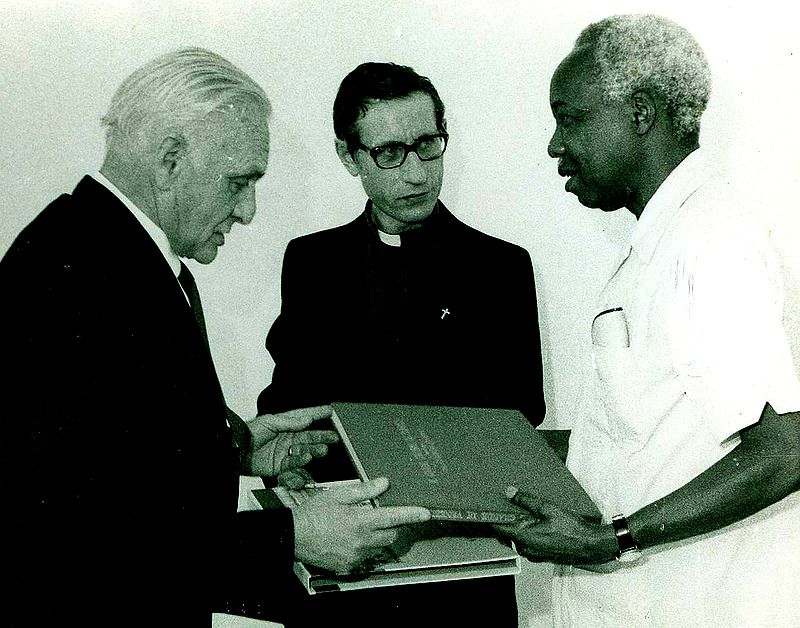
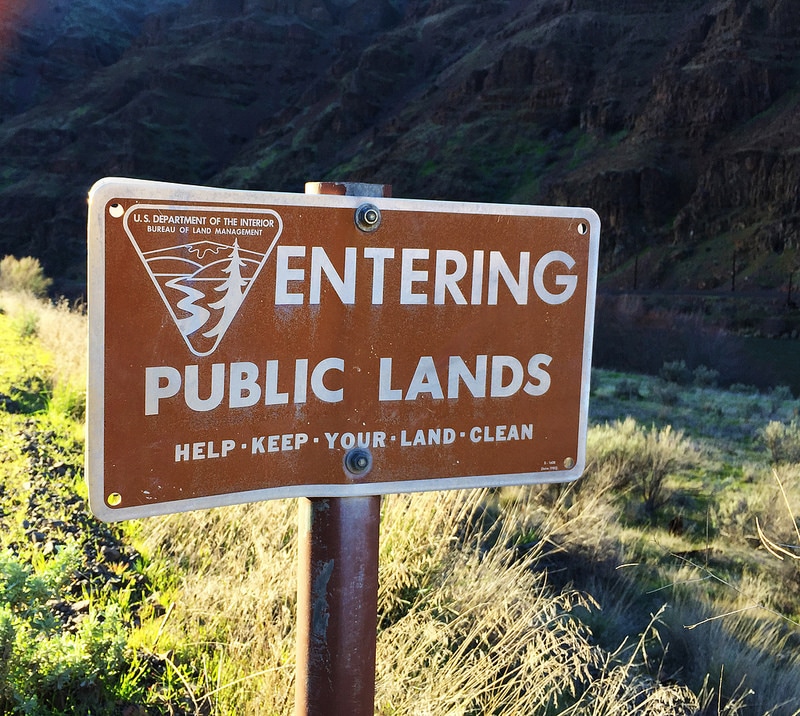


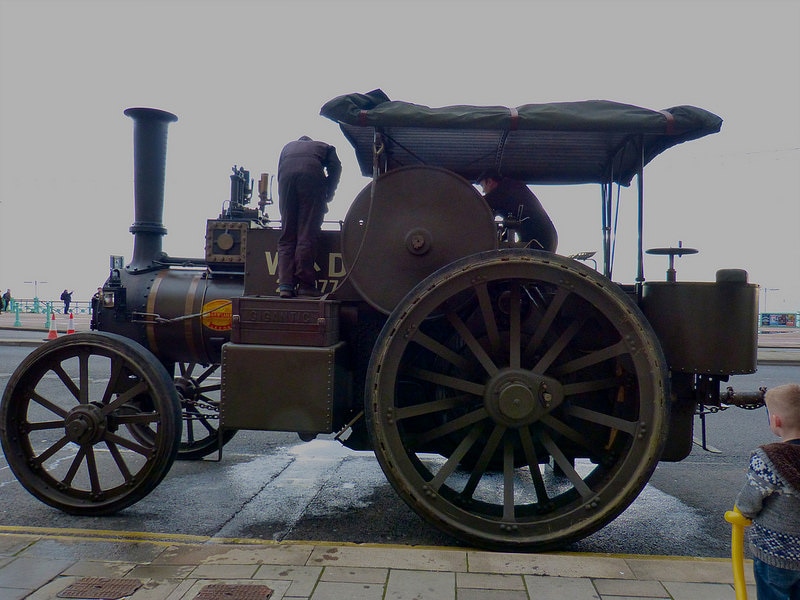

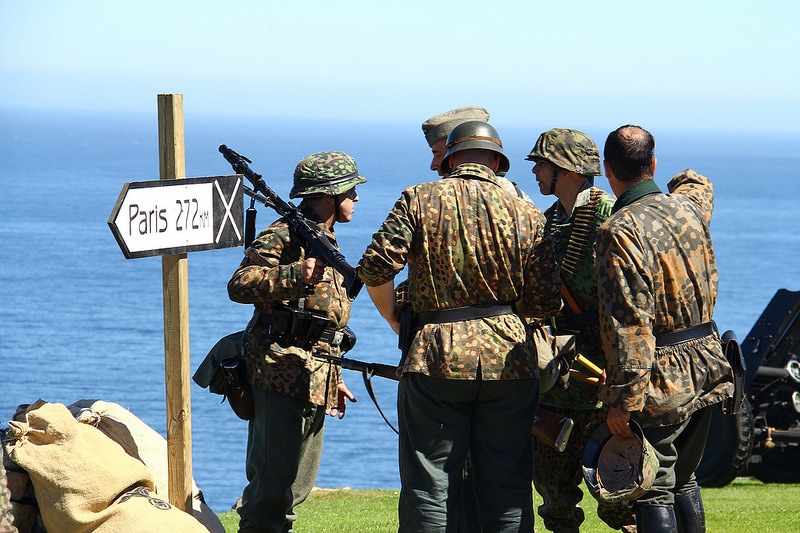
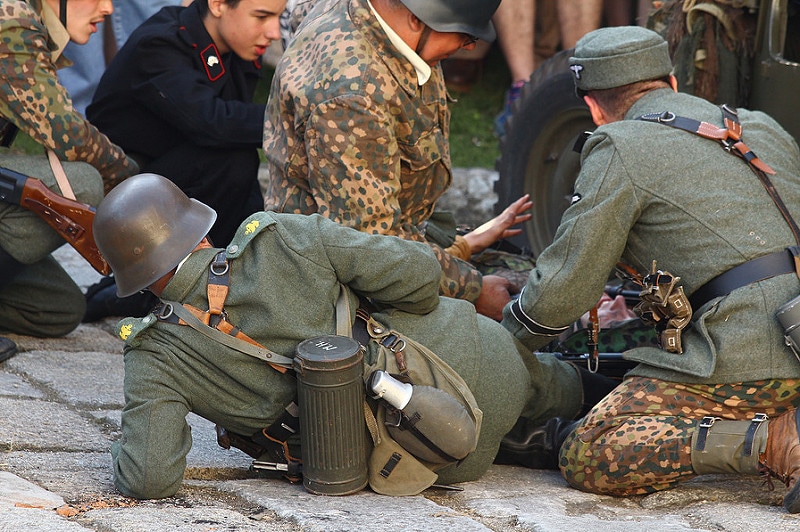


 RSS Feed
RSS Feed